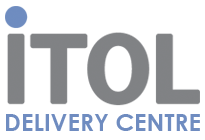Appraisal – Understanding the Job Purpose and Key Result Areas
As part of creating an effective appraisal process, you need to understand and accurately record the job purpose and key result areas.
Make no assumptions at this stage; bear in mind that:
- i) You may know the appraisee’s job or you may have held the job yourself. But with the rate of change impacting on us all, you cannot make assumptions about what they find easy/hard and the systems and constraints placed upon them.
- ii) Remember – they are not you and when you did their job you did not have you as a manager. You need to obtain feedback on your performance.
Job Purpose
Start by defining the purpose of the job. This is a brief definition of why the job exists at all. An example for a Management Trainer is:

Remember to focus on why the job exists and not on what the person does. We often tell people what we do (“I fix machinery”) or what our job title is (“I’m an Engineer”) but we do not state why our job exists, which is the vital one (“I keep the plant operating”).
Key Result Areas
Once the job purpose is clear, you can then identify five or six areas in which results must be achieved if the job purpose is to be fulfilled. These are the broad areas within a job that change little from year to year.
Everyone’s job can be broken into key result areas (KRA). For the Management Trainer, key result areas could be:

The KRA approach has three main advantages:
- Areas such as innovation, client response time and staff development are included rather than being overlooked.
- It is the first stage of objective setting.
- It makes it easier to assess current performance.
The key result areas of a Human Resource Specialist may be:

Here is a list of key result areas which may appear in various jobs from one organisation to another:
General Management/Senior Executive

Finance and Accounting

Sales
Manufacturing

Marketing
Secretarial, Clerical and Administrative

Finally, key result areas for everyone in an organisation are:
Once the key result areas have been established, you can then set specific objectives for an individual within each accountability area.
How Should Goals and Targets be Agreed?
A major part of an appraisal is the agreeing of goals and targets for the following period. The time spent before and during the appraisal review getting these right will ensure a better quality and more objective assessment process at the next and subsequent reviews.
Ineffective or badly worded goals and targets are a common problem in appraisal reviews and can lead to ambiguous expectations, unexpected results and quite costly inefficiencies within the organisation. The secret is to identify what it is that needs measuring and to state the measurement in “output” terms rather than in “input” terms. That means goals and targets should be about results not the processes and the procedures that need to be followed in order to achieve those results.
For instance, requiring someone to attend six meetings during the year or visit twelve potential new customers per month are both specific targets but where is the benefit to the business in those targets being met? Anyone can attend meetings or visit people
but what about the outcome of those meetings and visits?
The value of objectives lies in making it clear what the staff member is to achieve during the reporting period. To ensure the objectives are clear, they should be:
- Within the staff member’s control
- Realistic in terms of skills and experience
- Important and not simply easy to measure
A method to ensure that goals and targets are of good quality is to use the SMART model:
SMART Objectives in Appraisal
Specific
Goals and targets should have a clear link to the organisational plan
Measurable
All goals and targets should contain something to measure them by
The measurements should be quantitative and qualitative
Agreed
Both parties need to agree the objective. It should not be imposed
Realistic
The realism should be in terms of the abilities and potentials of the individual
coupled with the needs of the organisation. The measures should be attainable
within the required time period and with the resources available
Timebound
The objectives should be achievable within an agreed timescale.
If you cannot measure an objective for an individual, you must ask the question: Why does the role exist at all?
Here are some ideas about measurables:
Quantity
Number of units produced/published/sent/received/processed/deadlines
Calls per hour/day/week
New products introduced
Grievances per 100 employees
Staff turnover
Customer complaints and compliments
Error rate or reworks
Returned goods
Sales increased
Profit increased
Increase in market share
Cost
Variance against budget
£’s spent
Profit
Waste
Overtime incurred
Speed
Time
Reduction in number of minutes/hours/days etc.
Deadlines and schedules met
Average call response time
Projects completed per week/month etc.
Number of minutes between customers
Qualitative
Accuracy
Customer satisfaction
Repeat business
Mistakes
Reworks/repairs









